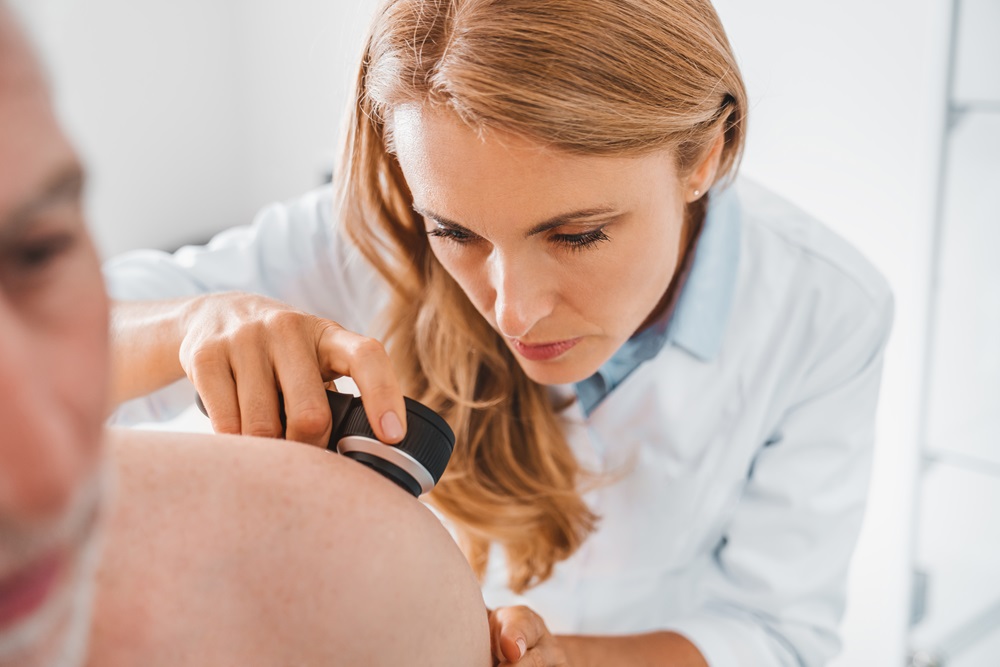The sun’s golden rays, while a source of warmth and vitamin D, cast a long shadow over our skin’s health, particularly in the form of sun spots. These blemishes, known medically as solar lentigines, are the skin’s testament to the relentless exposure to ultraviolet (UV) light. Manifesting as dark patches, their appearance can vary from brown to grayish tones, depending on the skin type. Accompanying these spots are often other signs of sun damage, such as dryness, thinning skin, or the emergence of wrinkles, each a silent narrator of the skin’s battles with the sun’s harmful rays.
Understanding the genesis and risk factors of sun spots is crucial for anyone seeking to maintain a radiant, healthy complexion. Predominantly appearing on areas most exposed to sunlight, like the face and hands, sun spots do not discriminate, affecting individuals of all skin tones, though those with fairer skin may find themselves more susceptible. The prevalence of these spots increases with age, particularly among those over 60 with lighter skin tones. However, younger individuals, including those who frequent tanning beds, are also at risk, underscoring the importance of proactive skin care and sun protection measures.
Understanding Sun Spots
Sun spots, varying in size, shape, and color, most frequently adorn skin areas most exposed to sunlight, such as the face and hands. Individuals with fairer skin are at a heightened risk, with statistics revealing that about 90% of light-skinned or fair-skinned people over the age of 60 exhibit sun-related spots. However, this doesn’t imply immunity for those with darker skin tones, who may notice damage through gray spots or ashy areas. These blemishes are not exclusive to the aging; young individuals, including those frequenting tanning beds, are also susceptible to early onset of sun spots.
Proactive Measures Against Sun Spots
The emergence of sun spots signals the skin’s defensive mechanism against UV damage, with the body ramping up melanin production in response to sun exposure. This protective tan, however, is a double-edged sword, as excessive melanin can lead to the very spots we seek to avoid. The key to preventing sun spots lies in minimizing sun exposure while still reaping the benefits of sunlight for vitamin D synthesis and mood enhancement.
Embrace Sunscreen
A cornerstone of sun protection, applying sunscreen before venturing outdoors is crucial. It’s essential to cover areas most prone to exposure, such as arms, hands, and face, to prevent sun spots and uneven skin pigmentation.
Opt for Protective Clothing
In the sweltering heat, the choice of clothing can play a pivotal role in skin protection. Opting for lightweight, breathable fabrics allows for comfort without compromising on defense against UV rays. Long-sleeved shirts, pants, and wide-brimmed hats provide substantial coverage, shielding the skin from potential damage.
Nutritional Defense
The link between diet and skin health, though seemingly indirect, is significant. Consuming foods rich in antioxidants can bolster the body’s resilience against sunburn and DNA damage. Studies have highlighted the benefits of beta-carotene in enhancing the body’s internal sun protection factor (SPF). Similarly, vitamins C and E are vital in fortifying the body’s natural defense mechanisms against UV exposure.
Integrating In-Home Care into Skin Health
While the aforementioned strategies offer a robust defense against sun spots, integrating in-home care practices can further enhance skin health. Personalized skincare routines, tailored to individual needs and skin types, can provide targeted treatment and prevention of sun damage. Regular skin assessments by healthcare professionals, accessible through in-home care services, ensure timely identification and management of any signs of sun damage.
In-home care services can also offer educational resources on effective sun protection techniques, ensuring individuals are well-equipped with the knowledge to safeguard their skin. Moreover, these services can facilitate access to nutritional advice, emphasizing the role of a balanced diet in maintaining skin health and resilience against environmental stressors.
The Path to Radiant Skin: Beyond Sun Protection
The journey towards a spotless complexion extends far beyond the confines of sun protection. It invites a deeper exploration into the realms of nutrition, personalized care, and the pivotal role of in-home care services in crafting a comprehensive skin health strategy. By embracing a diet rich in antioxidants and tailoring skin care routines to address individual needs, we can fortify our skin’s defenses against the sun’s damaging effects. This holistic approach not only seeks to prevent sun spots but also nurtures the skin’s overall health and resilience.




